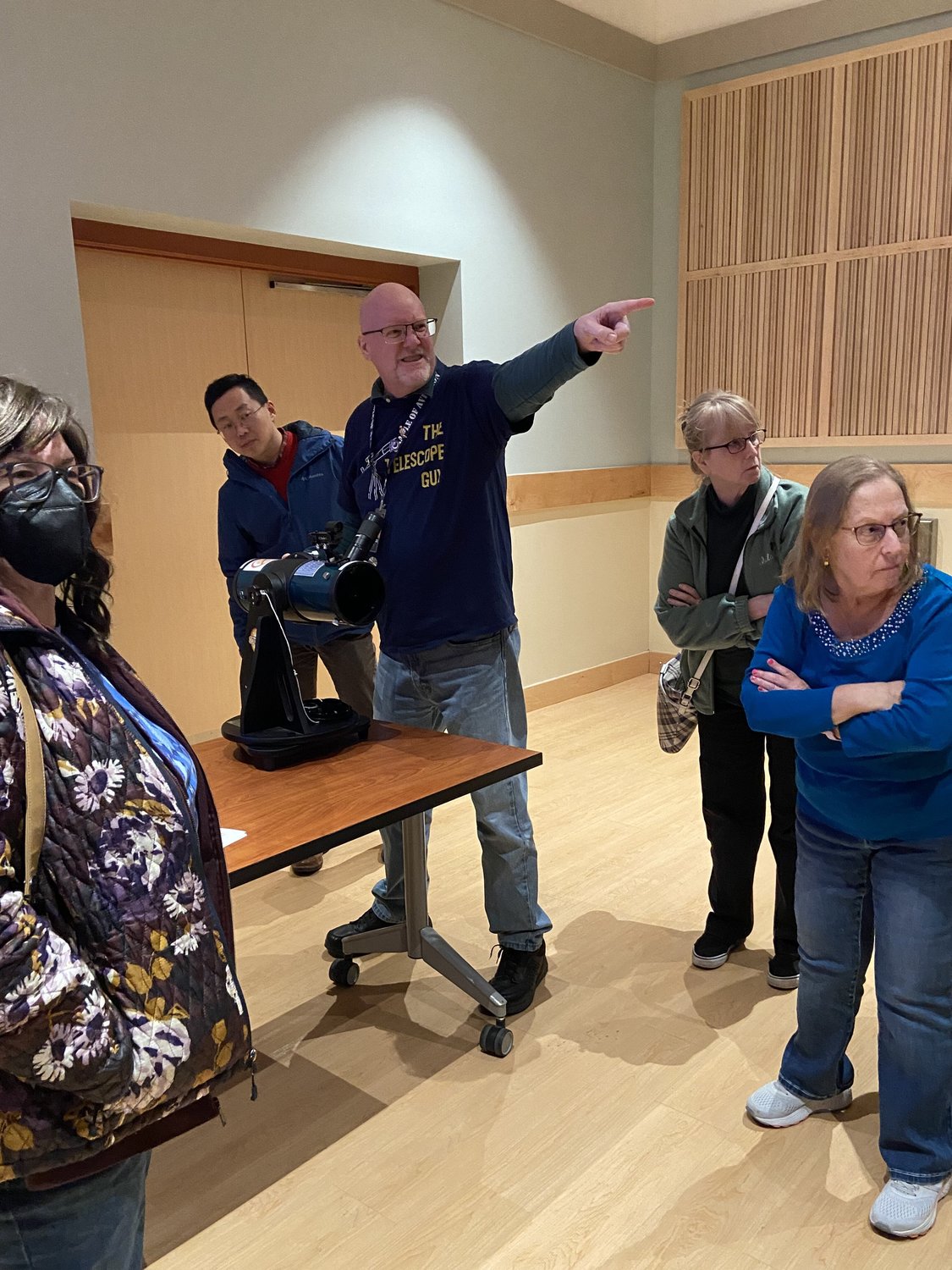Library patrons go stargazing
Tom Lynch helps Nassau facilities get telescopes
Self-described amateur astronomer and NASA Solar System Ambassador Tom Lynch has been interested in outer space since he was 10 years old. He took that love and ran with it, and has now helped more than 15 Nassau County libraries obtain telescopes and teach their residents how to use them.
On March 29, it was the East Meadow Public Library’s turn to learn how to use a telescope that was donated by the Amateur Observers Society of New York. It can be lent out to cardholders the same way they take out books.
Residents gathered in the auditorium while Lynch talked about the telescope, how to use it, tips and tricks on how to view a distant object, and information about the stars.
Lynch is a retired accountant from Lynbrook who now works with the International Library Telescope Program. The program was founded in 2008 by Marc Stowbridge and the New Hampshire Astronomical Society. Stowbridge’s goal was to make the telescope simple, easy to transport and use, hard to lose and hard to damage.
The Orion StarBlast telescope at the library, Lynch said, is easy to operate and perfect for beginners. There are additional attachments available, like a zoom eyepiece, astronomy books, planisphere, and Moon map, to enhance a user’s experience.
“Some of the more inexpensive telescopes can be really horrible telescopes because they are shaky, it’s really hard to look at things, and if you don’t know what you are doing, they are almost impossible to use,” Lynch said. “I can’t tell you how many people I heard of that have bought a telescope, brought it home, couldn’t get it to work, threw it in the closet, and then 20 years later, they threw them out.”
Once a library acquires the telescope with Lynch’s help, he then makes modifications to it to ensure that pieces don’t detach which makes it easier for residents to use and nothing gets lost.
Lynch told attendees to make sure that they never look at the sun with the telescope, and to carry it by wrapping their arm around the base. He said to always start at the least magnification to find the object, to increase magnification once the object is in view, and then readjust focus after the object in sight.
“I do not work with telescopes, but I want to learn about them,” East Meadow resident Maryanne Pinzler said. “I have always been fascinated by them. And now, I have free time to focus on them.”
A packet called, “The Evening Sky Map,” was given out to attendees showing all of the constellations in the sky for the month of March 2023.
“With the telescope, you can see Andromeda galaxy, which is 2.5 million light-years away, but it is a little hazy,” Lynch said. “You can see Globular clusters, which are balls of stars that are tens of thousands of light years away and you can see them pretty clearly. You can see the planets, you can see the moon.”
Lynch said some of the best places on Long Island to view the night sky are Robert Moses State Park or Jones Beach. Although, he said, you need a New York State stargazing permit to use a telescope at both locations. He recommends using the telescope anywhere the sky is not heavily affected by light pollution
After his presentation, everyone was allowed to try out the telescope to make sure that they could successfully focus on an object. Then, for the main event, Lynch took the telescope outside to the front of the library to look at the moon and the stars.

 50.0°,
Overcast
50.0°,
Overcast 




